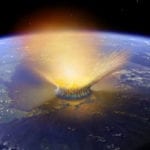 Our World
Our World  Our World
Our World  History
History 10 Historical Figures You Didn’t Know Had Tattoos
 Food
Food 10 Head-Scratching Food Fads That Have (Mostly) Come and Gone
 Movies and TV
Movies and TV 10 Sequels That Simply Repeat the First Film
 Technology
Technology 10 Surprising Stories Made Possible by Cutting-Edge Technology
 Animals
Animals 10 Popular Misconceptions about Dogs
 History
History 10 Unbelievably Badass Women from History
 Music
Music 10 Rock Musicians with Impressive College Degrees
 Misconceptions
Misconceptions 10 Totally Deceptive Marketing Tactics Exposed
 Movies and TV
Movies and TV 10 Amazing Facts About 10 of the Most Popular Television Shows
 Our World
Our World 10 Incredible Discoveries That Were Announced This Year
 History
History 10 Historical Figures You Didn’t Know Had Tattoos
 Food
Food 10 Head-Scratching Food Fads That Have (Mostly) Come and Gone
Who's Behind Listverse?

Jamie Frater
Head Editor
Jamie founded Listverse due to an insatiable desire to share fascinating, obscure, and bizarre facts. He has been a guest speaker on numerous national radio and television stations and is a five time published author.
More About Us Movies and TV
Movies and TV 10 Sequels That Simply Repeat the First Film
 Technology
Technology 10 Surprising Stories Made Possible by Cutting-Edge Technology
 Animals
Animals 10 Popular Misconceptions about Dogs
 History
History 10 Unbelievably Badass Women from History
 Music
Music 10 Rock Musicians with Impressive College Degrees
 Misconceptions
Misconceptions 10 Totally Deceptive Marketing Tactics Exposed
 Movies and TV
Movies and TV 10 Amazing Facts About 10 of the Most Popular Television Shows
10 Space Myths We Believe Because Of Movies
Space has been a part of popular science fiction for a long time now. Space movies give us the thrill of venturing into the unknown, and with modern-day CGI and moviemaking tech, they’re quite a spectacle to watch, too.
Despite pop culture’s love for space, though, there are still many things Hollywood gets wrong about it. You’d think that we’d have an accurate idea of what it’s like out there, but because of movies, many of us are likely picturing space very, very wrong.
Now, we’re not saying that movies need to get everything right, as all fiction demands some suspension of disbelief to be enjoyable. All we’re saying is that our idea of space would be a bit closer to reality if screenwriters just looked a few things up online before writing their drafts.
10 Explosions In Space
There’s no doubt that seeing a huge space explosion on a big high-definition screen is one of the ten best things in life. Impressive visuals aside, whether those explosions can scientifically happen or not is another matter altogether. Explosions on Earth—which the movies take inspiration from—look the way they do because of air and gravity. The air works as an oxidizer, and the outward pressure from the blast makes the explosion fly outward and collapse back into the ground.
Explosions in space, though, would be a lot different (and much more awesome) than that. There would be some fire despite the lack of air—as some types of fuels can act as oxidizers—though it won’t be like the fire we know. This fire would look like a continuously expanding ball of light due to the microgravity and lack of air resistance. It would also be dangerous for the spaceships nearby, as the shrapnel would keep expanding outward until something stops it.[1]
9 Black Holes Suck Everything In
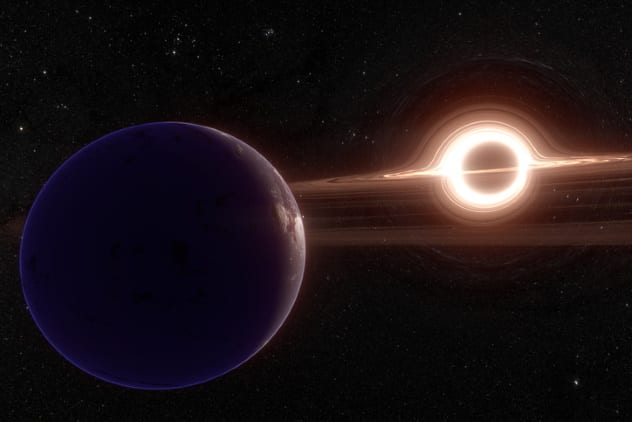
Black holes are portrayed in movies as all-consuming vortices of doom and destruction that you can’t escape from if you’re in the vicinity. That’s how most of us imagine them, as we really have nothing else to go on—those physics books are too complicated to read through.
If you read even the most basic academic description of black holes, though, you’d realize that we have massively misunderstood them. They’re not any different from any other celestial body in the universe, as their pull is directly proportional to their mass. They can’t attract anything more than what their size allows. If our Sun were to somehow be replaced by a black hole as massive as itself, absolutely nothing would change in the solar system—well, gravitationally speaking at least, as the Sun is kind of important in other areas.
While it’s true that a black hole will gobble up everything near its event horizon, it would just have a normal gravitational effect on things outside that radius (which is usually very small).[2]
8 The Asteroid Belt Is Dense And Crowded
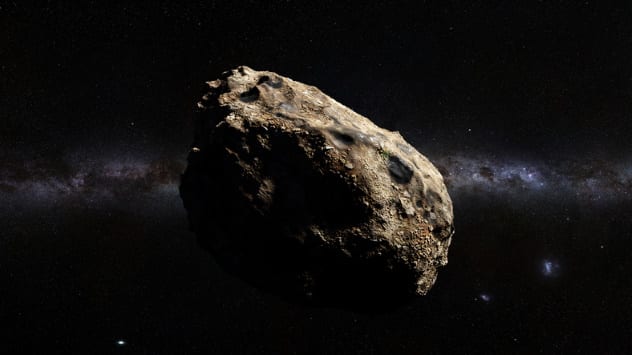
The inner and outer planets of the solar system are separated by something called the asteroid belt. As the name makes clear, it’s a ring of asteroids and other debris revolving around the Sun, and movies have always made it a point to use it. Usually, they show the belt to be a crowded area, with dense clouds of rocks you have to expertly maneuver through to get to the other side.
If that’s how you always imagined the asteroid belt to be like, we’re sorry to report that your mental image is massively inaccurate. The sky from an asteroid in the belt would look a lot like the sky from Earth because of the distances we’re talking about. For any spacecraft that passes through it, there’s very little chance of a collision, as the asteroids are greatly spaced out and far from each other.[3]
7 Everything About Space Warfare
It’s natural that we’d model space warfare after battles on Earth, as that’s the only frame of reference we have. Space fights look a lot like dogfights we see in World War II movies, with spacecraft fighting like aircraft would on Earth.
While these battles do look awesome, they’re not based in scientific reality.[4] Real space warfare would probably look nothing like the movies, with fighting ships designed with preventing decompression and resisting radiation in mind instead of aerodynamics. Also the usual dogfighting tactics wouldn’t work in space, either. While the overall battlefield strategy of Earth-based warfare would still apply—envelopment would still likely work the same way—the movement and maneuvering in a real space battle would be alien to anyone who grew up watching Star Wars.
6 The Sun Is Yellow Because It’s Burning

Despite it being the main reason behind life on Earth, most of us still don’t get how the Sun actually works. We assume that it’s yellow in color, possibly because we think that it’s burning, and that’s what fire looks like. That also means that we don’t quite understand what makes the Sun produce so much heat, either.
For one, the Sun is not yellow at all and only looks to be because the Earth’s atmosphere gives it that yellow tint. Sunlight is pure white in color.[5] More importantly, the Sun isn’t burning at all, at least not in the way we typically understand the word. Instead of an everlasting fire, the Sun’s heat comes from fusion reactions of various molecules in its core.
5 Planets Always Circle Their Stationary Suns
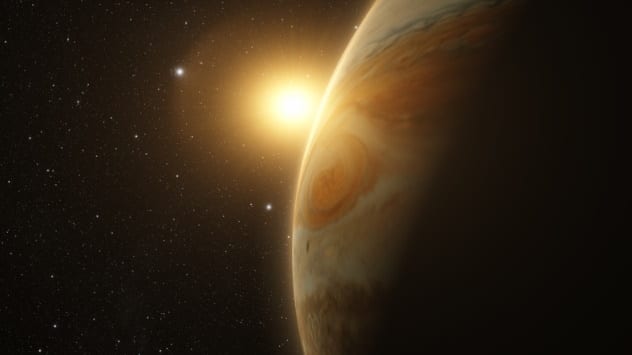
When we think of the various solar systems around the universe, we picture them exactly like ours. There’s a stationary star in the center, and—depending on whether the system has planets—various celestial bodies revolving around it in circles/ellipses, regardless of their sizes.
While that’s pretty much true for our cosmic neighborhood, in a solar system with more than one planet as big as, say, Jupiter (or bigger), their rotation would look very different, and you’d likely see the star in some kind of movement, too.
Gravity is a two-way force, so the Earth is pulling the Sun, and the Sun is pulling us. We just don’t notice it because the Earth’s gravitational effect is negligible compared to the Sun, though that’s not the case for bigger planets. In the case of Jupiter and the Sun, they actually orbit around a point in space beyond the Sun’s surface.[6] This effect would be even more pronounced for systems with many humongous planets like Jupiter. That’s not how we generally picture every solar systems in the universe.
4 Laser Beams Are Visible
Laser weapons have been a part of sci-fi movies for quite some time. Now that we’re close to seeing them used on the battlefield, most people would be disappointed to find out that they’re nothing like the movies.
In essence, a laser beam is a concentrated burst of energy that could be employed for various functions on the battlefield, something space opera directors have used too many times at this point. Unlike the movies, though, real-life laser beams would be completely invisible in space (unless it’s going right into your eye), as there shouldn’t be any particles around to scatter the light.[7]
3 Weightlessness
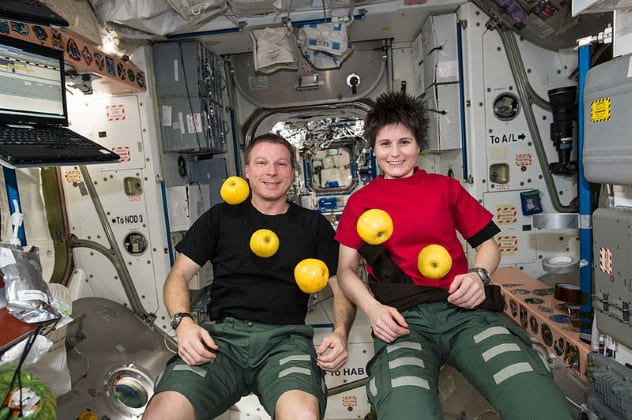
It’s widely believed that you’re weightless in space, which seems like a sensible assumption, as there’s no gravity there. Many movies and fictional works provide credence to it, and there are many videos of people floating in space, suggesting that they are, indeed, weightless.
While it’s true that many astronauts feel weightlessness in space, it’s only when you’re in an orbit around a bigger body. That happens on the International Space Station (ISS), for example. Other than that, you’re always under the influence of gravity from somewhere, no matter how faint. You’re never truly weightless in space unless you’re in a perpetual fall around a planet or other celestial body, as is the case with the ISS. We’re not sure why movies still treat all of space as a gravity-free zone, as gravity is present everywhere in space.
2 Sound In Space
The idea that you can hear the sounds of explosions in space is largely due to the space movies of the past century. It’s not true; sound simply can’t travel in space due to a lack of air and vibrating molecules.[9] We should be thankful for that, too, because if it could, we’d always be able to hear the sounds of the universe, like the constant thermonuclear explosion that is our Sun.
Even if we’re now able to better mimic real-life physics, we still use the trope of exploding things in space making deafening sounds, as it comes off better on-screen than just a noiseless visual. While movies like Stanley Kubrick’s 2001: A Space Odyssey have managed to get this one right, such films are more the exception than the rule.
1 Nothing In The Universe Can Go Faster Than The Speed Of Light

The speed of light is considered to be ultimate barrier for humanity, as it’s usually thought to be impassable. All sorts of theories exist around what it’ll be like to reach that point, but none of our equations account for going beyond it.
As it happens, we know of at least one thing in the universe that’s faster than the speed of light: the rate of its expansion. To the bafflement of scientists and casual sky-watchers alike, the universe was found to be expanding faster than the speed of light (at least in terms of the speed of different objects, like distant galaxies, relative to each other), though it isn’t something that we understand very well. The rate of its expansion is also proportional to how far away something is; the farther it is from us, the faster it’s moving away.[10]
That’s not all; there’s scientific—albeit theoretical—proof of particles that could travel faster than the speed of light, though we haven’t yet been able to find them in reality. Many scientists believe that there are more things out there that could challenge the light barrier; all we need to do is find them.
You can check out Himanshu’s stuff at Cracked and Screen Rant or get in touch with him for writing gigs.
Read about more lies the movies have you believing on 10 Medical Myths You Believe Because Of Movies and 10 Myths About Weapons And Combat You Believe Because Of Movies.






